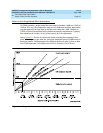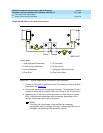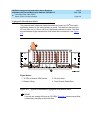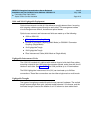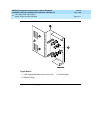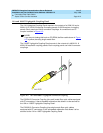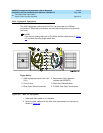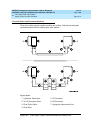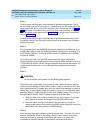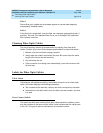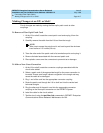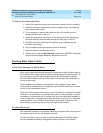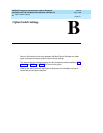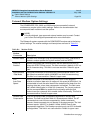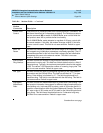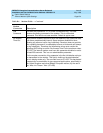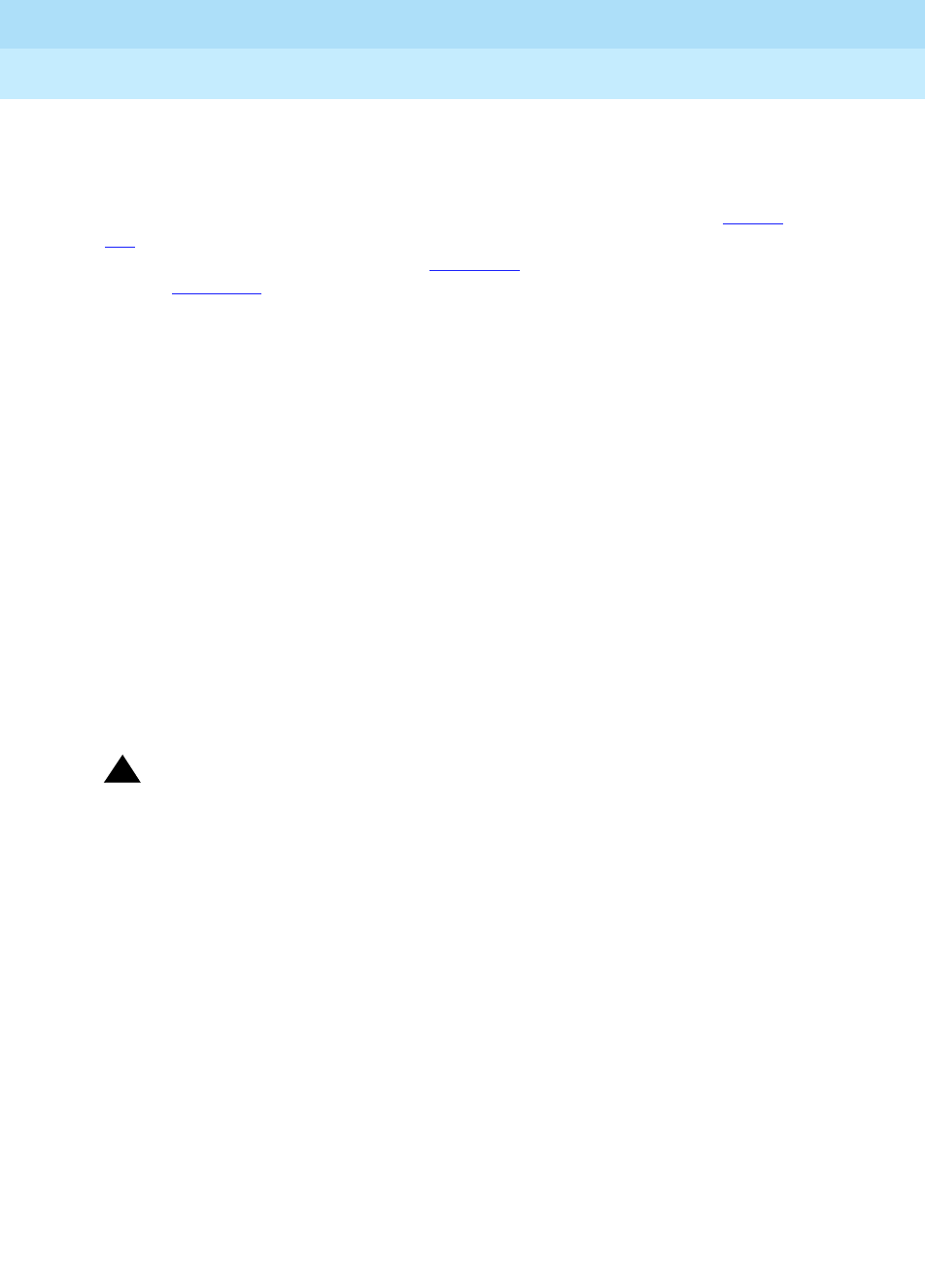
DEFINITY Enterprise Communications Server Release 6
Installation and Test for Multi-Carrier Cabinets
555-230-112
Issue 5
May 1998
Connecting Fiber Optic Cables
Page A-15Optical Cross-Connect Hardware
A
Rule 1
Cross-connect the fiber optic cable between 2 lightwave transceivers. That is,
run the cable from the TX connector on 1 transceiver to the RX connector on the
other transceiver, and in reverse for the other cable. See the top half of Figure
A-7. Multi-mode connections using an LIU for fiber cross-connects to remote
EPNs are shown in the bottom half of Figure A-7
. For single-mode connections,
refer to Figure A-2
.
Cross-connect the fiber optic cable between 2 lightwave transceivers for each
connection (row) on the fiber optic cable running list as shown in the Customer
Service Document.
Rule 2
For multi-mode fiber, use the 9823A (shortwave) transceiver for distances of up
to 4900 feet (1494 m). Use the 9823B (longwave) transceiver for distances of up
to 25,000 feet (7620 m). Ensure all 9823As connect to 9823As and all 9823Bs
connect to 9823Bs.
For single-mode fiber, use the 300A single-mode fiber optic transceivers.
Single-mode fiber is generally used to connect remote EPNs at distances of up to
115,000 feet (22 miles or 35 km). Single-mode fiber may require attenuators. It is
usually more cost effective to use multi-mode fiber between cabinets when
possible.
Rule 3
!
CAUTION:
Do not route fiber optic cables and the B25A cables together.
Route fiber optic cables away from groups of other cables where they may be
stretched by the weight of metal cable bundles. It may be necessary to run fiber
optic cables with the I/O cables, such as in the cable slack manager or under a
raised floor. In these cases, protect the cable by running it in a dedicated area if
possible. When the cable must be run with other cabling, protect it by running it
through flexible conduit. Use the following steps to route the cable:
1. Route the fiber optic cable up toward the top of the cabinet. The excess
cable should be looped and draped from the B25A cable clamp.
2. Dress the cable running up the back of the cabinets by
loosely
tie
wrapping the cable to the outside of the B25A cable clamp (do not put the
cable inside the clamp holding the B25A cables).
Rule 4
Avoid bending fiber optic cables to a radius smaller than 1.5 inches (3.8 cm), to
prevent mechanical stress on the cables. Plan the use of cable ties to avoid
crimping the cable or creating a fixed stress point where, at a later time,
movement of the cable causes it to exceed the minimum bend radius.



